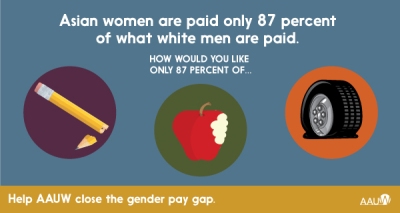
We are now more than a week into Asian Pacific American Heritage Month. Since it’s not always clear to me what is generally known (or not known) about Asian Americans, let me test out a few things here.
Did you know…
…that the month of May was originally chosen to mark the first wave of Japanese immigrants to the U.S. (May 7, 1843) as well as the anniversary of completion of the transcontinental railroad on May 10, 1869–a milestone only possible because of large scores of Chinese immigrant labor?
…that the U.S. Asian population grew 72% between 2000 and 2015 (from 11.9 million to 20.4 million)— the fastest rate of growth of any major racial-ethnic group? Given this rate, Asians are projected to surpass Hispanics in 2055 as the largest immigrant group in the U.S. (i.e., they will comprise 38% of all U.S. immigrants, while Hispanics will make up 31% of the total immigrant population).

…that the largest Asian ethnicities represented in the U.S. are Chinese (except Taiwanese), Indian, Filipino, Vietnamese, and Korean, though the U.S. Census collects data from more than 14 other groups?
Of special interest to me is how API women are faring. In the past two weeks, my social media newsfeed has been ablaze with heated discussions about cultural appropriation and its affect on API women (after a white teenager wore a traditional red Chinese qipao to her prom and after Whole Foods announced a partnership with a restaurant called “Yellow Fever” founded by a Korean American.
Yep, that happened. But…
I’d prefer to write about other things, such as the existing wage-gap for for API women (based on ethnicity) and white, non-Hispanic men in the U.S. It’s as low as 51 cents for Burmese women, 56 cents for Samoan women, and 59 cents for Hmong women for every dollar paid to white, non-Hispanic men in the U.S.
Some Asian women ethnicities, however, are outperforming their white, non-Hispanic counterparts: Sri Lankan women are earning $1.09, Taiwanese women are earning $1.18 and Indian women are earning $1.24 for every dollar that their white male, non-Hispanic counterparts are earning but they are still being paid less than their Asian male colleagues (i.e., Sri Lankan women earning 86 cents to every Sri Lankan male dollar, Taiwanese women 72 cents to every Taiwanese male dollar, and Indian women earning 76 cents to every Indian male dollar).
Those statistics alone should reveal the importance of keeping the data disaggregated and not relying on “model minority” myths of uniform success.
One organization that’s helped me keep up with issues I care about is the National Asian Pacific American Women’s Forum (NAPAWF). Their advocacy worked is focused around three core issues: (1) reproductive health and rights, (2) economic justice, and (3) human rights.
Check them out if you haven’t already. You’ll learn, for example, how sex-selective abortion bans in the U.S. have the veneer of protecting girls/women, but are really “wolves in sheep’s clothing” and are fueled by both racist and empirically unfounded stereotypes.
What have you done or what will you to do to celebrate Asian Pacific American Heritage Month in your own way?
* * *
Grace Yia-Hei Kao is Associate Professor of Ethics and Co-Director of the Center for Sexuality, Gender, and Religion at Claremont School of Theology. She is the author of Grounding Human Rights in a Pluralist World (Georgetown University Press, 2011) and co-editor, with Ilsup Ahn, of Asian American Christian Ethics (Baylor University Press, 2015). She has a forthcoming anthology (co-edited with Rebecca Todd Peters) entitled Encountering the Sacred: Feminist Reflections on Women’s Lives, and is slated to be published by with T&T Clark in the Fall 2018. Learn more about her and her work on her personal website.




Thank you so much for sharing your research and information! Way to celebrate!
LikeLiked by 1 person
An enticing beginning, Grace. I wonder what the difference is between the experience of AP women in Canada and the US? What influence might the ancient Asian practices in medicine and spirituality have in the West and how they might enrich each other? How do AP women and men living in North America relate to their heritage – preserve family traditions? What degree of prejudice do AP people experience in other Countries? Many questions come to mind. Thank you for the link and your stimulating post.
LikeLiked by 1 person
Barbara – thanks for your reading and your interest. There’s definitely overlapping histories in Canada and the U.S. (e.g., both had their forms of “Chinese exclusion” and their internment in concentration camps of persons of Japanese heritage) for sure. The point about “alternative medicines” is interesting, too, with some Asian demographics practicing “Western” medicine (consider the large numbers of Asian Indian doctors and others doing acupuncture, etc. So much more to say and to discuss!
LikeLike
Thank you for this, Grace. My Eurasian teen daughters experience all kinds of interesting cultural dynamics in the US. I will share this with them.
LikeLike